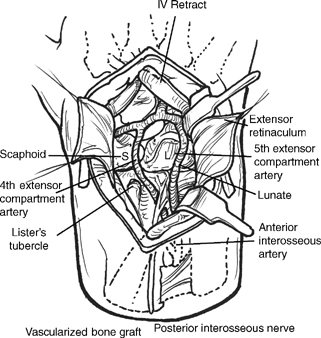56 Vascularized Bone Grafting for Kienböck Disease Vascularized bone grafts (VBGs) can be used for revascularization in early or advanced Kienböck disease with an ulnar neutral or plus variance as long as the cartilage shell is intact and no arthrosis is found. VBGs can also be used as an adjunctive procedure to radial shortening in patients with an ulnar minus variance. This technique is not indicated when there is fragmentation of the lunate or arthritis.
Indications
Technique

Stay updated, free articles. Join our Telegram channel

Full access? Get Clinical Tree








